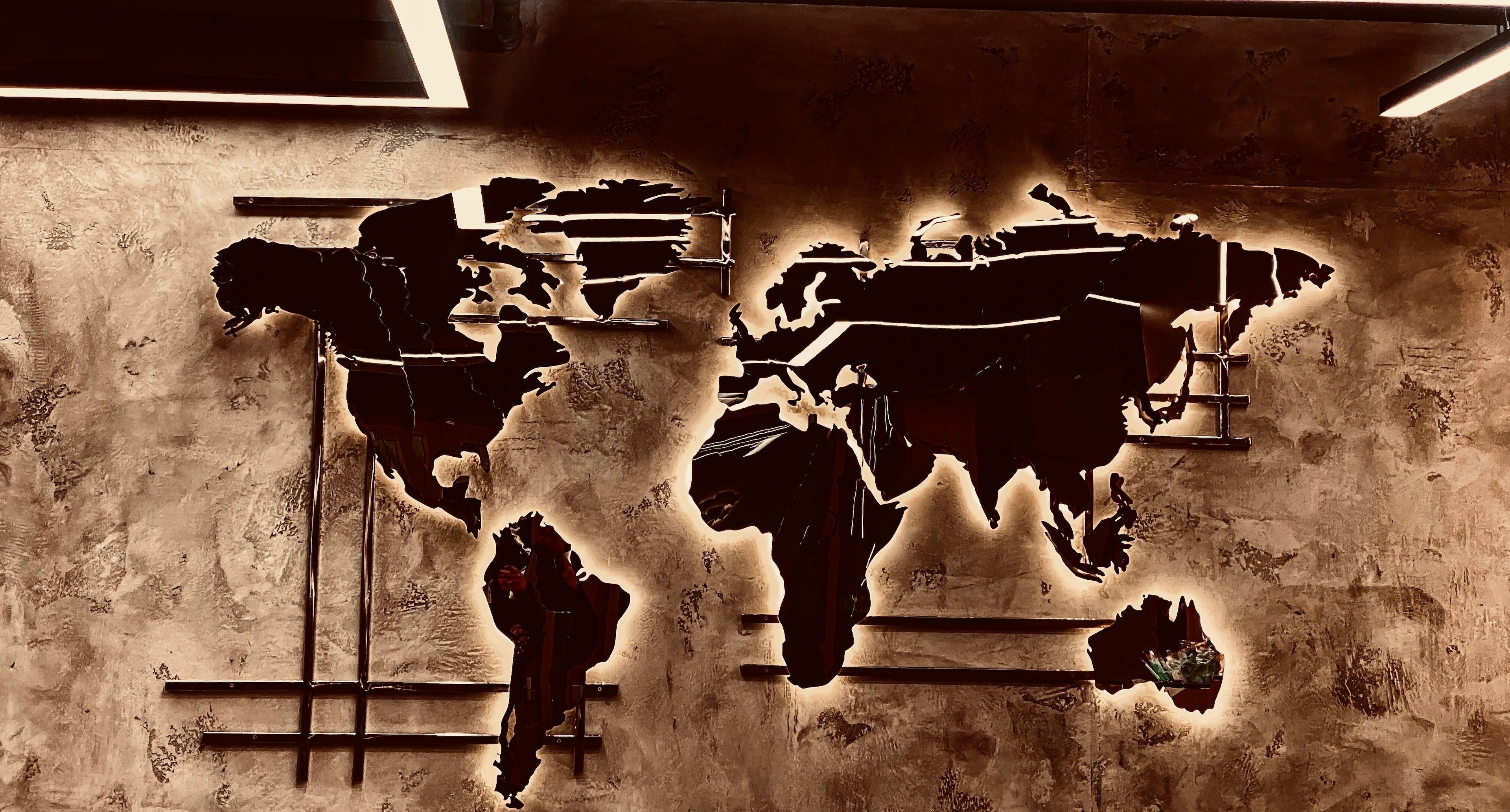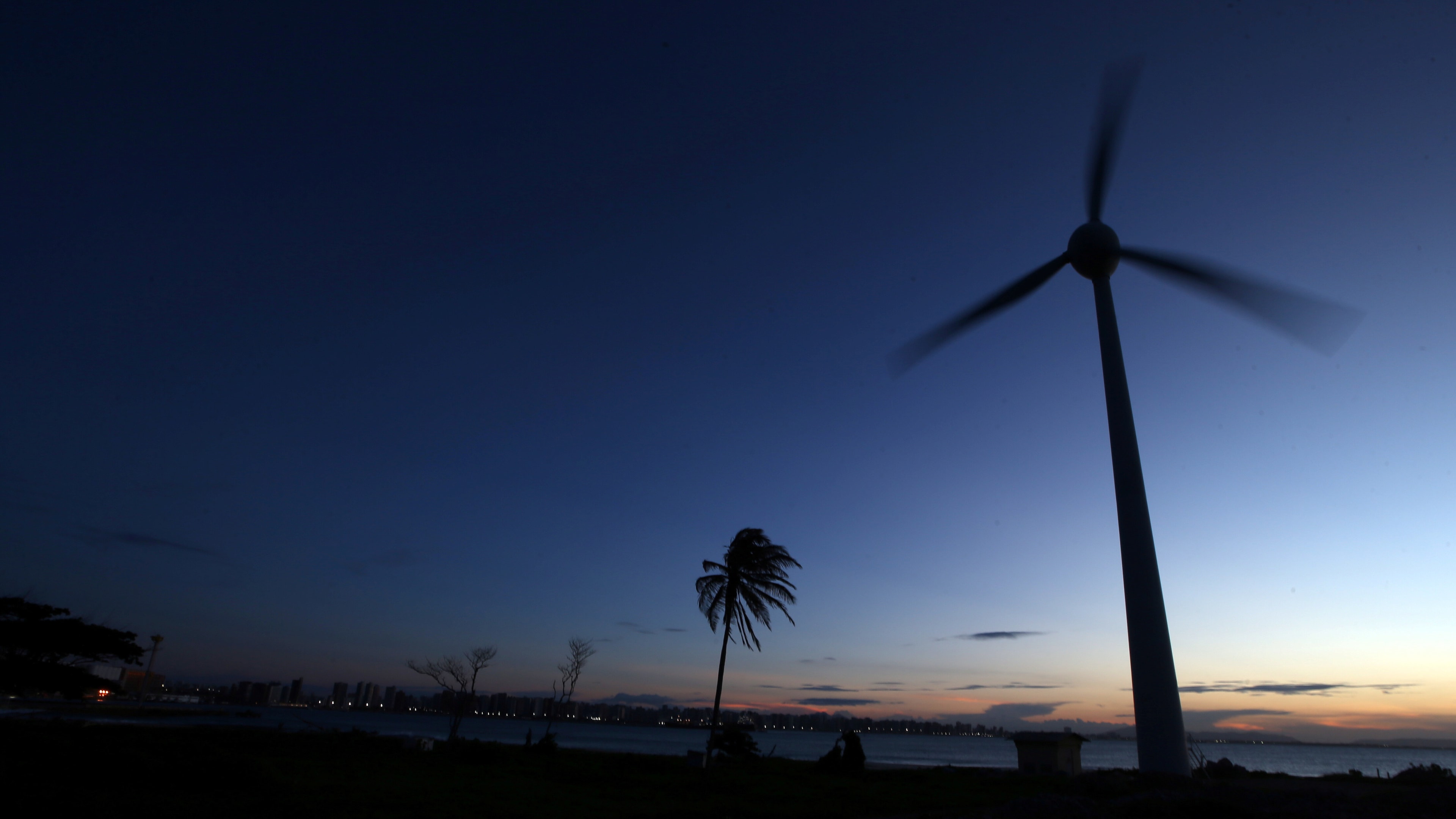A brief history of GDP - and what could come next

GDP's history and relevance
Image: National Park Service/Wikimedia Commons.
Listen to the article
- As the World Economic Forum launches the video-podcast Stakeholder Capitalism, host and author Peter Vanham looks at GDP, the focus of episode 1.
- Gross Domestic Product (GDP) is the sum of the value of all goods and services produced in a country each year.
- Against the backdrop of the Great Depression and World War II, it became the main tool for measuring a country's economy.
- Peter Vanham discusses its history and relevance in this book excerpt taken from Stakeholder Capitalism: A Global Economy that Works for Progress, People and Planet.
- Watch and hear all episodes of the Stakeholder Capitalism podcast here.
Accept our marketing cookies to access this content.
These cookies are currently disabled in your browser.
What if your invention changes the world, but not in the way you intended it? That is what happened to Simon Kuznets, a Russian-born US economist, who helped develop the concept of gross domestic product, or GDP, almost a century ago.
For Kuznets, who tried to make sense of the Great Depression and its impact on the economy, GDP was a useful measure. It helped account how much goods the US economy produced, and how quickly it rebounded after the crisis. But the economist also warned it was a poor tool for policymaking – to no avail.
For many markets and policymakers, GDP growth has become an all-consuming metric, even though it is counterproductive to solve some of the world’s biggest problems: inequality and environmental degradation, which are getting worse over time.
The crises we are facing may be the ultimate “I told you so” of an oft misunderstood economist, and could be summarized as “Kuznets’ Curse”. But before we get deeper into this “curse”, let’s examine who exactly Simon Kuznets was, and when and how he invented GDP.
Who was Simon Kuznets?
Simon Kuznets was born in Pinsk, a city in the Russian Empire, in 1901, and studied economics and statistics at the University of Kharkiv (now in Ukraine). But despite his promising academic record there, he would not stay in the country of his birth for long after reaching adulthood.
In 1922, Vladimir Lenin’s Red Army won a years-long civil war in Russia. With the Soviet Union in the making, Kuznets, like thousands of others, emigrated to the US. There, he first got a PhD in economics at Columbia University, and then joined the National Bureau of Economic Research (NBER), a well-respected economic think tank.
His timing was impeccable. In the decades after his arrival, the US grew to become the leading world economy. Kuznets was there to help the country make sense of that newly found position. He pioneered key concepts that dominate economic science and policymaking to this day and became one of the world’s most prominent economists.
Backdrop of boom and bust
When Kuznets arrived in the US, the country was on an economic high; it came out of the First World War swinging. US manufacturers introduced goods, such as the car and the radio, to the country’s huge domestic market, selling them to a public hungry for modern goods. Aided by a spirit of free trade and capitalism, the US soon became the world’s leading economy.
But the heady experience of the Roaring Twenties soon turned into the calamitous Great Depression. By 1929, the booming economy had spiralled out of control.
The context was one of economic extremes. A handful of individuals, such as oil magnate John D. Rockefeller, bank titan John Pierpont Morgan and steel giant Andrew Carnegie, controlled colossal amounts of wealth and economic assets, while many workers had a much more precarious existence, still often depending on payday jobs and agricultural harvests.
Moreover, an ever-rising stock market, not backed by any similar trend in the real economy, meant financial speculation was reaching a fever pitch.
In late October 1929, a colossal collapse of the stock market occurred and set in motion a chain reaction all over the world. People defaulted on their obligations, credit markets dried up, unemployment skyrocketed, consumers stopped spending, protectionism mounted, and the world entered a crisis from which it would not recover until after World War II.
The birth of GDP
As US policymakers grappled with how to contain and end the crisis at home, they lacked the answer to a fundamental question: how bad is the situation, really? And how will we know if our policy answers work? Economic metrics were scarce, and GDP – the measure we use today to value our economy – had not been invented.
Enter, Simon Kuznets. An expert in statistics, mathematics and economics, he developed a standard way of measuring the gross national product or GNP of the US. It would give an idea of just how much goods and services were produced by American-owned companies, whether at home or abroad. A few years later, Kuznets also developed GDP.
GDP was the sum of the value of all goods and services produced in a country each year (and, unlike GNP, excluded the value of US-owned facilities abroad). It could be measured either by adding the value of all finished goods and services, and subtracting the cost of intermediary products, or you could find it by adding up all salaries, profits and investment incomes.
The most common way to calculate it was the so-called “expenditure approach”. It calculates total GDP as: Gross Domestic Product = Consumption + Government Expenditure + Private Investment + Exports – Imports
(From an economic perspective, all those sums should add up to the same: aggregate production = aggregate income = aggregate expenditure.)
Kuznets’ invention was a stroke of genius. It summarized in one number the economic strength of the entire nation and gave policymakers hints on to how to improve it. During the remainder of the 1930s, other economists helped standardize and popularize it, and by the time the Bretton Woods conference was held in 1944, GDP was confirmed as the main tool for measuring economies around the world.
GDP's limitations
Since then, GDP has become something of a talisman. When GDP is growing, it gives people and companies hope, and when it declines, governments pull out all the policy stops to reverse the trend. Although there were crises and setbacks, the story of the overall global economy was one of growth, so the notion that GDP growth is good, reigned supreme.
In the 30 or so years after the Second World War, reporting GDP was a recurring triumph, especially in the West. It was the “Golden Era of Capitalism” in America, the “Wirtschaftswunder” in Germany, and the “Trente Glorieuses” in France. Nominal GDP growth could reach 10% or more, and in real, inflation-adjusted terms still often topped 5%.
But there is a painful end to this story, and we could have foreseen it had we better listened to Kuznets himself. In 1934, long before the Bretton Woods Agreement – and before even the scepter of war – Kuznets warned US Congress not to focus too narrowly on GNP or GDP: “The welfare of a nation can scarcely be inferred from a measure of national income,” he said.
The welfare of a nation can scarcely be inferred from a measure of national income.
”This assessment proved prescient. GDP tells us about aggregate consumption, but it does not tell us about personal well-being. It tells us about production, but not about the pollution that comes with it, or the depletion of natural resources it requires. It tells us about government expenditure and private investments, but not about the quality of life they generate.
Oxford economist Diane Coyle told us in a recent interview that, in reality, GDP was “a war-time metric.” It tells you what your economy can produce when you’re at war – as was the case in the early 1940s – but it does not tell you how you can make people happy when you’re at peace. It tells you how valuable trees are when you cut them down and turn them into fences or benches, but not what they’re worth when left standing.
Despite early warnings from its inventor, GDP conquered the world. Everything was done to prop up its growth. Roads and highways were built, personal consumption encouraged, industry and transportation were subsidized, and so on. But, starting in the 1970s, the GDP growth story did start to cool down, first in the West, then globally.
Why did this happen? In part, because the so-called quality of new GDP growth was low. After some oil shocks in the 1970s, government money began repaying previous debts, or subsidizing unprofitable industries and practices, rather than investing in crucial areas such as education and housing.
But, as global annual GDP peaked, our ecological footprint did so too, leading to an ecological deficit. Forests were cut to make way for agriculture and industry, oceans were depleted of their fish stocks, and fossil fuels were burned and polluted the air, leading to climate change. In the short-term that lead to growth, in the long-term it damaged our health, wealth and well-being.
To reinvigorate GDP growth in the 1980s, governments liberalized industries and opened to trade, in the hopes it would spur competition, and unleash a new wave of economic growth. That did happen at first, but by the 2000s, its side effects became clear: rising market concentration and a declining labour share of income. Median incomes stagnated, and public services worsened.
The result is that the magic formula of GDP growth now seems exhausted. In the West, GDP does not grow like it used to, and well-being stopped increasing a long time ago. A feeling of permanent crisis has taken hold of societies, and perhaps with good reason. As Kuznets knew, we never should have made GDP growth the singular focus of policymaking. Alas, that is where we are today.
Valuing natural, social and human capital
So, what can we do to better summarize the economic performance of a nation, and to do so in a way that incites progress for all people and the planet?
On a micro level, it would be more useful if we looked at the “median disposable income” of a household, rather than a “per capita production” number. It does a better job at indicating how citizens in a country are faring economically. In the past few decades, it would have warned us, much sooner than GDP growth did, that the average family in fact was no longer experiencing economic gains.
On a macro level, it may be better to also account for the “spring” of our wealth, not just its “flow” each year, Girol Karacaoglu, the former chief economist at the New Zealand Treasury said. To do so, we need to value not just financial capital, but also the natural, social and human capital of an economy: indeed, they are the true “source” of our wealth.
New Zealand has started doing this, and it reveals in a much clearer way that GDP growth often goes at the expense of other sources of well-being. It showed, for example, that economic growth that happened at the expense of the environment, did in fact lower our overall wealth, rather than increase it. And that just because the nation got financially wealthier, it didn’t necessarily increase the satisfaction or well-being of its citizens.MGDP towards wellbeing
Moving beyond GDP
Finally, even if we do stick with GDP, we should remember that it is an “idea”, Diane Coyle said. It reflects what we want it to reflect – and that idea changes over time. For example, GDP by convention does not consider unpaid work in the household – often done by women – as it doesn’t “produce” anything. But by now, we should recognize its value in a modern economy. We should thus update the definition of GDP.
In the span of less than a century, GDP has become incredibly important – and for good reason. It helped war-torn economies that wanted to rebuild their production capacity in peacetime, and developing economies like China, seeking to industrialize their economy: thanks to GDP, they could measure just how much progress they were making towards that goal.
But in today’s economy, we know that well-being is about much more than just the measurable production and consumption of goods and services. It is about valuing the environment and all the benefits it brings, the care economy and the happiness and health it generates, or the “social contract” that comes with having everyone in a society better off, rather than just a few.
In the 21st century, we need better measures of well-being. We need to go beyond GDP.
This article contains excerpts and a graph from Stakeholder Capitalism: A Global Economy that Works for Progress, People and Planet by Klaus Schwab with Peter Vanham (with additional reporting by Natalie Pierce and Robin Pomeroy.)
The book is on sale now and we recommend buying it through Book Depository.
Related topics:
More on Geo-Economics and PoliticsSee all
Sofiane Khatib and Caroline Berson
September 19, 2025
Emily Bayley
August 28, 2025
Spencer Feingold
August 18, 2025
Piyush Verma
August 18, 2025
Kate Whiting
August 5, 2025






